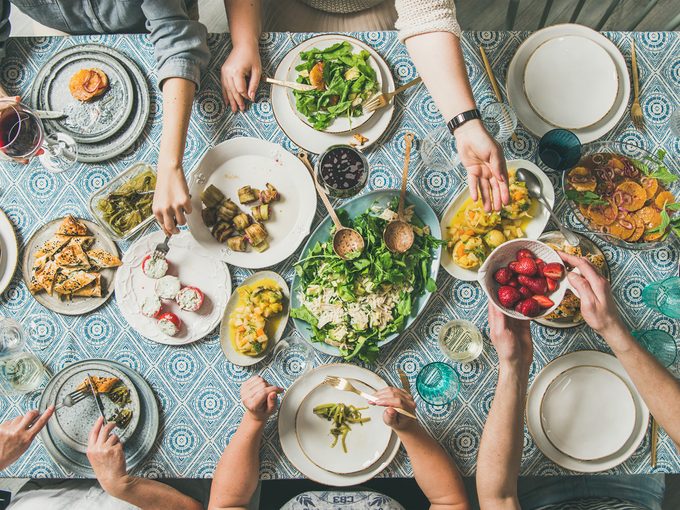These “Blue Zone” Foods Are The Secret To Living Longer
Follow these diet secrets from around the world to live a long, healthy life.

We all know obesity is a dangerous problem in this country, and have heard the dire warnings that some kids today may not even outlive their own parents. Pretty scary stuff. But perhaps solutions can be found in the world’s “Blue Zones.”
If you haven’t heard of this concept, it was born back in 2009 with a book by American writer and researcher Dan Buettner called The Blue Zones. He travelled the world with a team of researchers, interviewing people age 100 or older to find out their longevity secrets, and identified the geographic pockets they call home. Buettner followed the book up a year later with Thrive: Finding Happiness the Blue Zones Way, and his message in both books is clear: A diet that’s rich in mostly plant-based foods and limits meat consumption appears to be one of the keys to longevity.
The odds of Blue Zone residents reaching 100 are up to 10 times greater than the average North American, and their rates of cardiovascular disease and cancer (Canada’s top killers) are significantly lower. While these regions vary in many ways, their residents have similar diets and lifestyle. Buettner noticed their core diet consisted of natural, unprocessed foods. And adopting that diet is not complicated. Says Anna Leiper, a clinical dietitian at the Capital District Health in Halifax, eating like those who live in the Blue Zones allows for a variety of foods. “This flexibility is essential: Any diet we adopt needs to be something we can stick with.” Here’s how to get started.
Eat your veggies
They’re low in calories, high in vitamins and fibre, and full of antioxidants. Blue Zone diets include at least two vegetables in every meal.
Love beans and tofu
They were in every Blue Zone diet. On the Nicoya Peninsula, they eat beans with tortillas daily. Okinawans get protein from miso soup or tofu. Beans and tofu provide protein but no cholesterol, and are high in fibre.
Drink in moderation
A daily drink has been shown to lower rates of heart disease and reduce cholesterol along with the effects of chronic inflammation. Red wine is rich in antioxidants and polyphenols, which may help ward off arteriosclerosis. The secret is moderation: More than a glass or two a day negates the benefits.
Eat nuts
People in Loma Linda who ate nuts at least five times a week had half the risk of heart disease and lived about two years longer than those who didn’t. This may be because nuts are rich in monounsaturated fat and soluble fibre, both of which lower LDL (‘bad’) cholesterol. They’re also a good source of vitamin E, a key to heart health. Since nuts are high in calories, though, limit yourself to a handful daily.
Limit meat
None of the Blue Zone centenarians were big carnivores. In Loma Linda, most were vegetarians. In Okinawa, Sardinia and Costa Rica, meat was reserved for special occasions.
Hara hachi bu
Okinawans say this before every meal. It means ‘eat until you are 80 percent full.’ It takes the brain about 20 minutes to communicate to the stomach that it is satisfied, so ‘hara hachi bu’ teaches us to eat until we are no longer hungry, rather than until we are full. Slow down during mealtimes and be mindful of each bite.
Find more blue zone meal ideas here.
American writer Dan Buettner found that Blue Zoners have these lifestyle habits in common:
1. Low-intensity exercise is a daily activity.
2. Life has a purpose that is pursued every day.
3. They take time to slow down, rest, relax and recuperate.
4. They participate in a spiritual community.
5. Family is a top priority.
6. They spend time every day with like-minded people they care about.
7. They don’t smoke.
More blue zone foods
• Olive oil
• Green tea
• Coffee
• Dark chocolate
• Fish
Next, check out these 18 foods that help fight depression.




